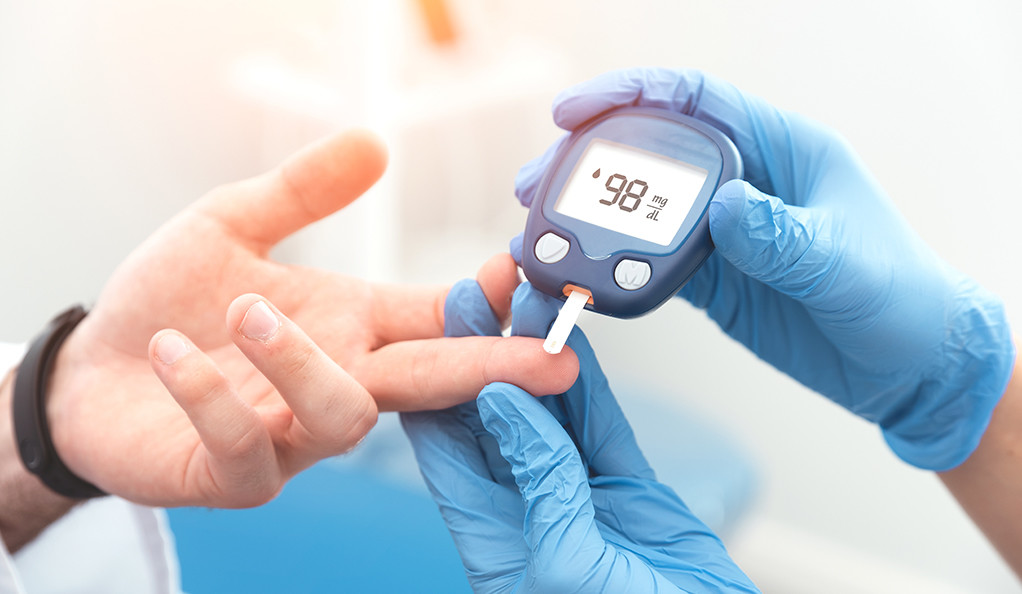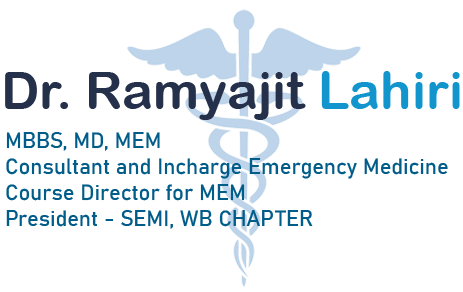Asthma Treatment
Asthma is an inflammatory disease of the airways to the lungs. It makes breathing difficult and can make some physical activities challenging or even impossible. According to the Centers for Disease Control and Prevention (CDC), approximately 25 million AmericansTrusted Source have asthma. It’s the most common chronic condition among American children: 1 child out of every 12Trusted Source has asthma. To understand asthma, it’s necessary to understand a little about what happens when you breathe. Normally, with every breath you take, air goes through your nose or mouth and down into your throat and into your airways, eventually making it to your lungs. There are lots of small air passages in your lungs that help deliver oxygen from the air into your bloodstream. Asthma symptoms occur when the lining of your airways swell and the muscles around them tighten. Mucus then fills the airways, further reducing the amount of air that can pass through. These conditions can then bring on an asthma “attack,” the coughing and tightness in your chest that’s typical of asthma.
Symptoms
The most common symptom of asthma is wheezing, a squealing or whistling sound made when you breathe. Other asthma symptoms may include:
- coughing, especially at night, when laughing, or during exercise
- tightness in the chest
- shortness of breath
- difficulty talking
- anxiousness or panic
- fatigue

COPD Treatment
Chronic obstructive pulmonary disease, commonly referred to as COPD, is a group of progressive lung diseases. The most common of these diseases are emphysema and chronic bronchitis. Many people with COPD have both of these conditions. Emphysema slowly destroys air sacs in your lungs, which interferes with outward air flow. Bronchitis causes inflammation and narrowing of the bronchial tubes, which allows mucus to build up. It’s estimated that about 30 million people in the United States have COPD. As many as half are unaware that they have it. Untreated, COPD can lead to a faster progression of disease, heart problems, and worsening respiratory infections
Symptoms
COPD makes it harder to breathe. Symptoms may be mild at first, beginning with intermittent coughing and shortness of breath. As it progresses, symptoms can become more constant to where it can become increasingly difficult to breathe. You may experience wheezing and tightness in the chest or have excess sputum production. Some people with COPD have acute exacerbations, which are flare-ups of severe symptoms.

Accident and Trauma Patients
Psychological trauma is a response to an event that a person finds highly stressful. Examples include being in a war zone, a natural disaster, or an accident. Trauma can cause a wide range of physical and emotional symptoms. Not everyone who experiences a stressful event will develop trauma. There are also various types of trauma. Some people will develop symptoms that resolve after a few weeks, while others will have more long-term effects. With treatment, people can address the root cause of the trauma and find constructive ways to manage their symptoms. In this article, we discuss the various types of trauma, trauma symptoms, and the available treatment options. Addressing the root cause of trauma can be an effective way to manage both physical and emotional symptoms. According to the American Psychological Association (APA), trauma is “an emotional response to a terrible event like an accident, rape, or natural disaster.” However, a person may experience trauma as a response to any event they find physically or emotionally threatening or harmful. A traumatized person can feel a range of emotions both immediately after the event and in the long term. They may feel overwhelmed, helpless, shocked, or have difficulty processing their experiences. Trauma can also cause physical symptoms. Trauma can have long-term effects on the person’s well-being. If symptoms persist and do not decrease in severity, it can indicate that the trauma has developed into a mental health disorder called post-traumatic stress disorder (PTSD).
Symptoms
The symptoms of trauma range from mild to severe. Many factors determine how a traumatic event affects a person, includingTrusted Source:
- their characteristics
- the presence of other mental health conditions
- previous exposure to traumatic events
- the type and characteristics of the event or events
- their background and approach to handling emotions

Drowning Victims
Near-drowning is a term typically used to describe almost dying from suffocating under water. It is the last stage before fatal drowning, which results in death. Near-drowning victims still require medical attention to prevent related health complications. Most people who nearly drown are young children, but drowning accidents can happen to anyone of any age.
Symptoms
Someone who has nearly drowned may be unresponsive. Other symptoms include :
- cold or bluish skin
- abdominal swelling
- chest pain
- cough
- shortness or lack of breath
- vomiting

Diabetics Treatment
Diabetes mellitus, commonly known as diabetes, is a metabolic disease that causes high blood sugar. The hormone insulin moves sugar from the blood into your cells to be stored or used for energy. With diabetes, your body either doesn’t make enough insulin or can’t effectively use the insulin it does make. Untreated high blood sugar from diabetes can damage your nerves, eyes, kidneys, and other organs.
Symptoms
Diabetes symptoms are caused by rising blood sugar. The general symptoms of diabetes include:
- increased hunger
- increased thirst
- weight loss
- frequent urination
- blurry vision
- extreme fatigue
- sores that don’t heal

Hypertension Treatment
Hypertension is another name for high blood pressure. It can lead to severe health complications and increase the risk of heart disease, stroke, and sometimes death. Blood pressure is the force that a person’s blood exerts against the walls of their blood vessels. This pressure depends on the resistance of the blood vessels and how hard the heart has to work. Almost half of all adults in the United States have high blood pressure, but many are not aware of this fact. Hypertension is a primary risk factor for cardiovascular disease, including stroke, heart attack, heart failure, and aneurysm. Keeping blood pressure under control is vital for preserving health and reducing the risk of these dangerous conditions. In this article, we explain why blood pressure can increase, how to monitor it, and ways to keep it within a normal range.
Symptoms
Chronic kidney disease (CKD) is a common cause of high blood pressure, as the kidneys no longer filter out fluid. This excess fluid leads to hypertension. Conditions that can lead to hypertension include:
- diabetes, due to kidney problems and nerve damage
- kidney disease
- pheochromocytoma, a rare cancer of an adrenal gland
- Cushing syndrome that corticosteroid drugs can cause
- congenital adrenal hyperplasia, a disorder of the cortisol-secreting adrenal glands
- hyperthyroidism, or an overactive thyroid gland
- hyperparathyroidism, which affects calcium and phosphorous levels
- pregnancy
- sleep apnea
- obesity

Pneumonia Treatment
Pneumonia is an infection in one or both lungs. Bacteria, viruses, and fungi cause it. The infection causes inflammation in the air sacs in your lungs, which are called alveoli. The alveoli fill with fluid or pus, making it difficult to breathe. Read on to learn more about pneumonia and how to treat it. The germs that cause pneumonia are contagious. This means they can spread from person to person. Both viral and bacterial pneumonia can spread to others through inhalation of airborne droplets from a sneeze or cough. You can also get these types of pneumonia by coming into contact with surfaces or objects that are contaminated with pneumonia-causing bacteria or viruses. You can contract fungal pneumonia from the environment. However, it doesn’t spread from person to person.
Symptoms
Pneumonia symptoms can be mild to life-threatening. They can include:
- coughing that may produce phlegm (mucus)
- fever
- sweating or chills
- shortness of breath that happens while doing normal activities or even while resting
- chest pain that’s worse when you breathe or cough
- feelings of tiredness or fatigue
- loss of appetite
- nausea or vomiting
- headaches

Medical management of Burn Patient
A burn occurs when heat, chemicals, sunlight, electricity or radiation damages skin tissue. Most burns happen accidentally. There are different degrees of burns. Your healthcare provider determines the seriousness (degree) of a burn based on the depth of the burn and the amount of affected skin. Burns can be painful. Left untreated, a burn can lead to infection.
Symptoms
Many things can cause a burn. Thermal sources, including fire, hot liquids, steam and contact with hot surfaces, are the most common causes of burns. Other causes include exposure to:
- Chemicals, such as cement, acids or drain cleaners.
- Radiation
- Electricity
- Sun (ultraviolet or UV light)

Various Drug overdose & Poisoning
A drug overdose is taking too much of a substance, whether it’s prescription, over-the-counter, legal, or illegal. Drug overdoses may be accidental or intentional. If you’ve taken more than the recommended amount of a drug or enough to have a harmful effect on your body’s functions, you have overdosed. An overdose can lead to serious medical complications, including death. The severity of a drug overdose depends on the drug, the amount taken, and the physical and medical history of the person who overdosed.
Symptoms
The symptoms of a drug overdose may vary depending on the person, drug, and amount taken. However, universal symptoms include:
- nausea and vomiting
- drowsiness
- loss of consciousness
- trouble breathing
- difficulty walking
- agitation
- aggression or violence
- enlarged pupils
- tremors
- convulsions
- hallucinations or delusions

Patient requires BiPAP and Ventilation
Ventilation
Noninvasive ventilation (NIV) refers to the administration of ventilatory support without using an invasive artificial airway (endotracheal tube or tracheostomy tube). The use of noninvasive ventilation (see the video below) has markedly increased over the past two decades, and noninvasive ventilation has now become an integral tool in the management of both acute and chronic respiratory failure, in both the home setting and in the critical care unit. Noninvasive ventilation has been used as a replacement for invasive ventilation, and its flexibility also allows it to be a valuable complement in patient management. Its use in acute respiratory failure is well accepted and widespread. It is the focus of this review. The role of noninvasive ventilation in those with chronic respiratory failure is not as clear and remains to be defined.

BiPAP (Biphasic Positive Airway Pressure)
Biphasic Positive Airway Pressure (BIPAP) can be described as pressure controlled ventilation in a system allowing unrestricted spontaneous breathing at any moment of the ventilatory cycle. It can also be described as a Continuous Positive Airway Pressure (CPAP) system with a time-cycled change of the applied CPAP level. As with a pressure controlled, time-cycled mode, the duration of each phase (T(high), T(low)) as well as the corresponding pressure levels (P(high), P(low)) can be adjusted independently. Depending on the spontaneous breathing activity, BIPAP can be subdivided into: no spontaneous breathing: CMV-BIPAP; spontaneous breathing at the lower pressure level: IMV-BIPAP; spontaneous breathing at the upper pressure level: APRV-BIPAP; spontaneous breathing at both CPAP levels: genuine BIPAP. Since it enables progressive transition from controlled to all levels of augmented mechanical ventilation, BIPAP appears to be a suitable mode for the entire period of mechanical ventilation of the patient. There are difficulties neither in choosing the correct moment for switching nor the further respiratory management of the ventilated patient under BIPAP. The necessary adaptation (ventilation, oxygenation) can be individualized on the basis of blood gas analyses. An increase or reduction of the invasivity of ventilation can be attained without any problems with BIPAP. Furthermore, spontaneous breathing of the patient does not necessitate any switching of the mode of ventilation. The transition from controlled to augmented ventilation is smooth. BIPAP enables the therapist to let the patient breathe freely even under the most invasive ventilation conditions.(ABSTRACT TRUNCATED AT 250 WORDS)
